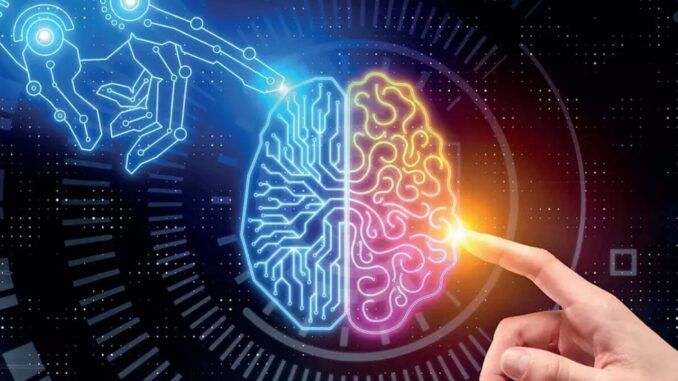
Neuromorphic computing, inspired by the structure and function of the human brain, has seen significant advancements in recent years.
These developments span hardware innovations, novel algorithms, and various applications, leading to more efficient and powerful computational systems.









Here’s an overview of the latest AI developments in neuromorphic computing:
Key Developments in Neuromorphic Hardware:
1. IBM TrueNorth
Architecture: IBM’s TrueNorth chip features 1 million neurons and 256 million synapses, organized into 4,096 neurosynaptic cores.
Applications: It is used for pattern recognition, sensory processing, and real-time cognitive tasks with low power consumption.
Advancements: TrueNorth’s architecture allows it to simulate spiking neural networks (SNNs) efficiently, making it suitable for tasks requiring real-time responses and low energy usage.
2. Intel Loihi
Architecture: Intel’s Loihi chip contains 130,000 neurons and 130 million synapses, with capabilities for on-chip learning.
Applications: It is designed for adaptive control systems, autonomous robotics, and dynamic pattern learning.
Advancements: Loihi supports real-time learning and adaptation, enabling it to perform complex tasks such as adaptive robotic control and sensory processing.
3. SpiNNaker (Spiking Neural Network Architecture)
Architecture: SpiNNaker is a massively parallel computing architecture designed to model large-scale spiking neural networks in real time.
Applications: It is used for simulating brain activity, advancing neuroscience research, and developing AI algorithms inspired by brain function.
Advancements: SpiNNaker’s design enables it to process large amounts of neural data simultaneously, making it an effective tool for simulating brain activity and exploring brain-like computing.
4. BrainScaleS
Architecture: BrainScaleS is a neuromorphic system that combines analog and digital components to simulate neural activity.
Applications: It is used for research in neural network models, brain function, and neuromorphic computing.
Advancements: BrainScaleS leverages analog circuits to achieve high-speed simulations of neural activity, providing insights into neural dynamics and potential applications in AI.
Advances in Neuromorphic Algorithms:
1. Spiking Neural Networks (SNNs)
Overview: SNNs use spikes (discrete events) for information processing, closely mimicking biological neural networks.
Developments: Advances in training algorithms, such as spike-timing-dependent plasticity (STDP) and other learning rules, have improved the efficiency and performance of SNNs.
Applications: SNNs are being used in sensory processing, robotics, and real-time decision-making systems.
2. Event-Driven Computing
Overview: Event-driven computing processes information only when significant events (spikes) occur, enhancing energy efficiency.
Developments: Algorithms that leverage event-driven paradigms have been developed for various applications, including image and speech recognition.
Applications: Event-driven computing is used in scenarios requiring low power consumption and real-time processing, such as wearable devices and IoT sensors.
3. Unsupervised Learning and Adaptation
Overview: Neuromorphic systems can learn and adapt without extensive labeled data, similar to the human brain’s learning process.
Developments: Techniques such as unsupervised learning and self-organization have been implemented in neuromorphic systems to enable adaptive behavior and learning from unstructured data.
Applications: These techniques are used in autonomous systems, anomaly detection, and adaptive control.
Applications of Neuromorphic Computing:
1. Robotics
Enhancements: Neuromorphic computing enhances perception, decision-making, and motor control in autonomous robots, enabling them to operate in complex environments.
Examples: Robots equipped with neuromorphic chips can navigate, recognize objects, and perform tasks with greater efficiency and adaptability.
2. Healthcare
Enhancements: Neuromorphic systems are used to develop brain-machine interfaces, prosthetics, and neuromodulation therapies, improving patient outcomes and quality of life.
Examples: Neuromorphic devices can interpret neural signals for controlling prosthetic limbs, enabling more natural movement and control for users.
3. Artificial Intelligence
Enhancements: Neuromorphic computing improves the efficiency and scalability of AI algorithms, particularly for tasks such as image and speech recognition, by mimicking brain-like processing.
Examples: AI systems utilizing neuromorphic principles can perform complex tasks with lower energy consumption and faster response times.
4. Internet of Things (IoT)
Enhancements: Neuromorphic chips enable low-power, real-time processing in edge devices, facilitating smart environments and IoT applications.
Examples: Smart sensors and devices equipped with neuromorphic computing can process data locally, reducing the need for constant cloud connectivity and enhancing privacy and security.

Leave a Reply